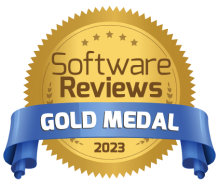How to Build a Tech Stack That Actually Works Together

When you think about the backbone of your business, your technology stack probably comes to mind. It’s what keeps your operations running smoothly—or at least, it should. The reality for many businesses is far from seamless. Disconnected tools, manual workarounds, and data silos often create more headaches than solutions. So how do you build a tech stack that truly works together?
Start With Your Goals, Not the Tools
Before diving into software demos or signing contracts, take a step back. What are you trying to achieve? Maybe it’s faster customer service, better inventory visibility, or streamlined reporting. Your tech stack should serve those goals—not dictate them. When you know what success looks like, you can choose tools that align with your vision instead of chasing shiny features.
Integration Is Everything 
A tool with impressive features is great, but if it doesn’t play well with others, it’s going to slow you down. Look for platforms that offer open APIs and native integrations. These connections allow your systems to share data automatically, reducing the need for manual entry and eliminating the risk of errors. When your tools talk to each other, your team spends less time fixing problems and more time focusing on growth.
This is where ERP software shines. A well-designed ERP system acts as the hub of your tech stack, connecting core functions like inventory, accounting, and sales into one unified platform. Instead of juggling multiple disconnected tools, ERP brings everything together—so your data flows seamlessly and your team can focus on growth rather than troubleshooting.

Think About the Future
Your business isn’t static, and your tech stack shouldn’t be either. Choose solutions that can scale as you grow. Cloud-based platforms often make this easier, offering flexibility and regular updates without the hassle of on-premise maintenance. A modular approach can also help—you can add new capabilities without tearing down your entire system.
Avoid Common Pitfalls

It’s tempting to buy every tool that promises efficiency, but more apps don’t always mean better performance. Overcomplicating your stack can lead to confusion and wasted resources. Don’t forget security either—every integration should protect your data, not put it at risk. And finally, invest in training. A well-built stack only works if your team knows how to use it.
The Payoff
When your tech stack works together, everything changes. Data flows seamlessly, teams collaborate without friction, and customers enjoy a smooth experience from start to finish. It’s not just about technology—it’s about creating a foundation for growth.
Your Next Step
If you’re ready to take the next step and want a solution that unifies your operations—from point of sale to inventory to accounting—Windward Software offers a platform designed to make your tech stack work as one.
Windward System Five combines robust POS capabilities, advanced inventory control, integrated accounting, and e-commerce features—all designed to help your business thrive.








